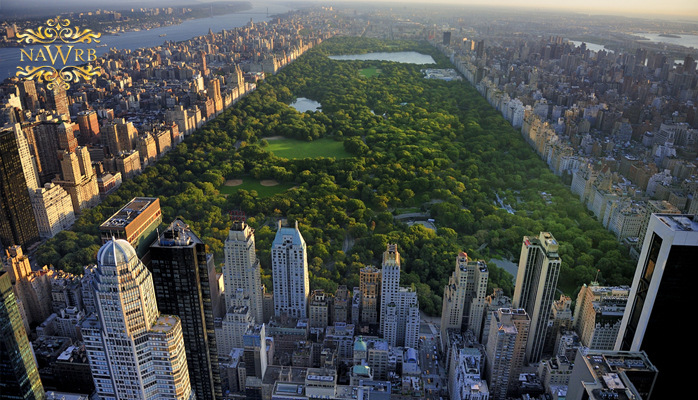The future of technology and design is a topic always at the helm of modern discussions. How will the next model of that luxurious car look? When will we see in real life the technology we’ve long observed in films? Essentially, how will the things we know and see everyday change next?
We are surely—at times slowly, other times briskly—moving toward the future. The latest example of this is the New York Horizon Project, winner of eVolo Magazine’s 2016 Skyscraper Competition.
In the project, designers Yitan Sun and Jianshi Wu propose digging Central Park down to the bedrock, thus exposing lakes and mountains, and subsequently constructing a 1000-foot tall structure around the perimeter of the park with mirrored walls reflecting New York’s architecture that would house thousands of apartments.
Sun and Wu identify their inspiration as wanting to increase accessibility to the park and reversing the “traditional relationship between landscape and architecture, in a way that every occupiable space has direct connection to the nature.” The design’s for the project are breathtaking and reinforce the idea that the futuristic structures and technologies of our books and films may be closer than we think. All giddiness aside, we must address the impact this project.
What new amenities would be needed for these residents: restaurants, stores, shopping malls? Would they help or hurt an already crowded metropolis? How would electricity, sewage, and other living demands be accommodated?
How would this project change the culture around Central Park? Would it remain a refreshing, relaxing place to go for a walk or read? Would it change the park’s perception to one of a luxurious complex where you are intruding on the residents in the new apartments?
The plan would undoubtedly increase access to Central Park to the residents of its thousands of new apartments; but these apartments, which would literally be on the park, would be expensive. For whom would they truly increase access? Furthermore, in a city that already prices millions of residents out of neighborhoods, what would be the effect of thousands of new luxury apartments on the market?
However likely or unlikely, sensible or fantastic, beneficial or disadvantageous, the New York Horizon Project is an amazing thing to consider. It is thought-provoking to see the design this female-male duo have created, and witnessing the increased participation of women in architecture, and in exciting developments such as this, is heartening and important.

 Login
Login

